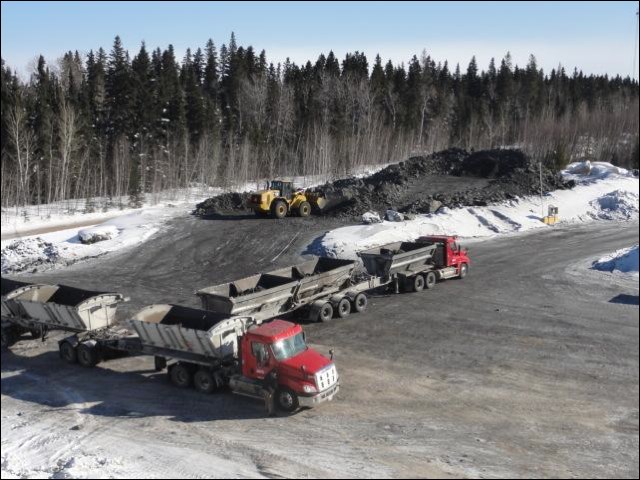While operations at Hudbay’s Reed mine have ceased, the mine stands as a unique model of environmental stewardship.
On-site work to demolish the mine is already underway, and will continue over the coming month.
The project will stand as Hudbay’s most environmentally conscious project to date.
In order to take advantage of the high-grade copper at Reed – which is located in Grass River Provincial Park – Hudbay had to consider many factors.
Jay Cooper, Hudbay Manitoba business unit director of environment, said the mine’s location in a provincial park did bring increased interest in how the mine would be built.
“Reed is in a provincial park, but it doesn’t necessarily change the overall level of care that we would take. We apply the same due diligence everywhere, but it does change the level of interest and scrutiny by the public and workers for what we do environmentally,” said Cooper.
“We knew that Reed had to be a model for environmental stewardship.”
The mine, which was located near areas previously cleared by forestry companies, is directly in the middle of an area that includes natural habitats for animals, including caribou.
To maintain those habitats, Hudbay made concessions unique to the project, including protecting as much of the natural vegetation as possible. Hudbay received permission from the provincial government to cut down 14 hectares of trees on the mine site. In the end, workers ended up cutting down only half of that area.
To conserve water and avoid contamination, Hudbay avoided building pump houses, altering shorelines or affecting lakes in the area. Instead, all water used at Reed Mine came from ground wells.
“This is the first mine in a very long time, perhaps ever, where we used wells,” said Cooper.
All of the waste rock that was stored on surface during the development of the mine has been returned underground. In addition, to minimize contamination into the environment, liners were placed underneath the mine effluent pond, parking and fueling areas. These will be removed as part of the closure activities.
When Dauphin and Snow Lake-based contractor Gerald Strilkiwski and his company began working on constructing the mine in 2012, two things were considered – getting the mine fully built fast, and getting the mine built sustainably.
“It was all a challenge – and working with Hudbay, they want it done right now, not tomorrow,” said Strilkiwski.
“There was nothing here when we started – we were the first ones to come in here. We built the road in from the highway along a little trail, then we brought in the logging equipment to clear the area, then started to clear the area and level everything off.”
Now that the mine has closed, Strilkiwski’s company will work with Hudbay to dismantle the site.
The workers have a scorched-earth plan – to leave as little trace of mine activity as possible.
Cooper said most of the buildings on the site were designed to be taken down. Almost no concrete was poured for building foundations.
“It’s easy to remove that and take it back as closely to the original surroundings as possible,” he said.
After that, crews will seal the open shafts and fill the mine portal, taking waste rock underground and barricading it. Limestone from around the site will be used to contour the site, and topsoil taken off the site in construction will be laid around the site.
“This is a park, and we live here too. We’re northern Manitobans. This park is important to us. We have a vested interest in making this as clean and as tidy of an operation as humanly possible,” said Cooper.
When asked what would remain of the old mine site, Strilkiwski was clear.
“Absolutely nothing. You could come back in a few years and the trees will start to grow and everything else. You come back here in ten years, you won’t even know there was anything here.”
Reed Mine may have a bigger impact on the mining industry than its total use or tonnage produced may suggest. Hudbay officials said the environmental lessons learned through working on the Reed project would be applied to future mining work in northern Manitoba.
“It’s not a big mine – matter of fact, it’s quite small, but small can also be efficient, nimble and influential. We’ve done a lot over the short history of Reed Mine and that is something everybody can be very proud of,” said Richard Trudeau, director of health, safety and Aboriginal and external affairs for Hudbay.
“Reed Mine became, in a way, a kind of research facility where we could try new ideas and work the bugs out before implementation into our larger operations.”
Flin Flon MLA Tom Lindsey is confident the project will be carried out with care and caution.
“I have a reasonable amount of confidence that they are going to do it right. They know they are under the microscope, right from the start. It’s been developed differently than any other mine was before here and there are enough people watching it to make sure it’s done right.”




